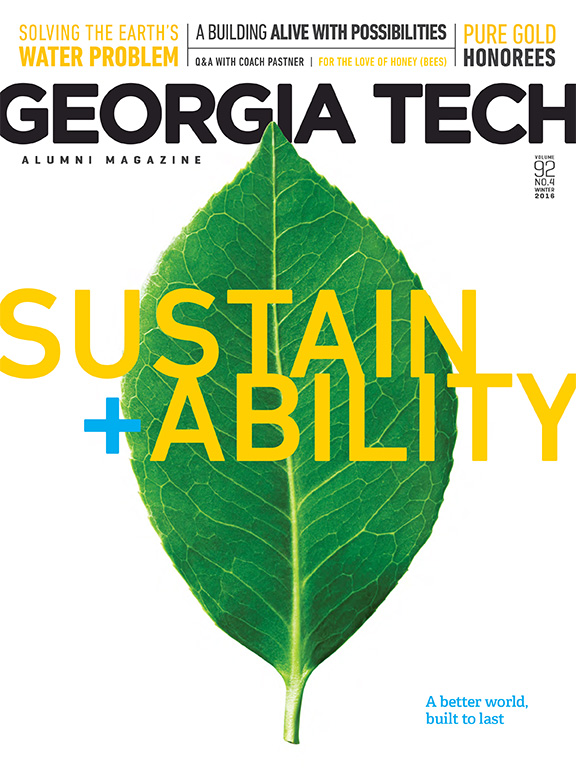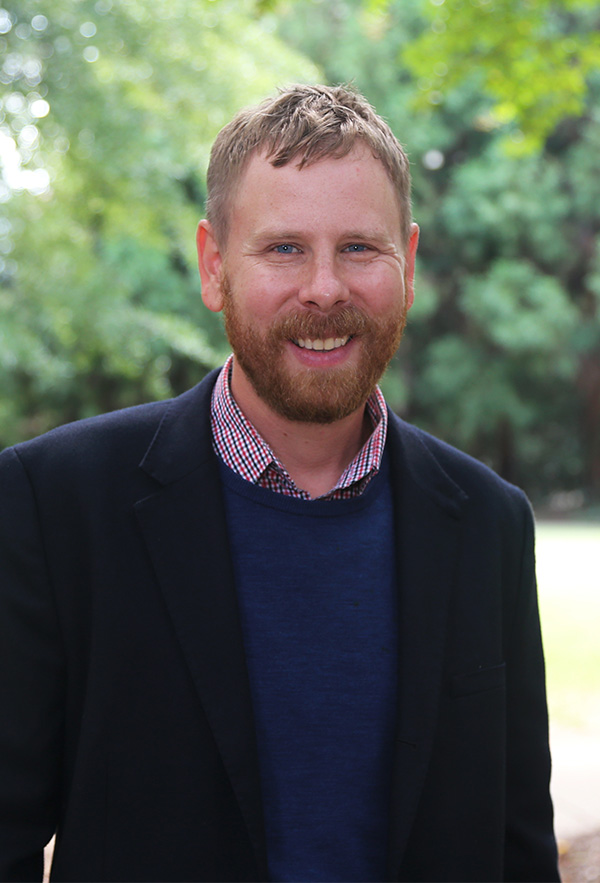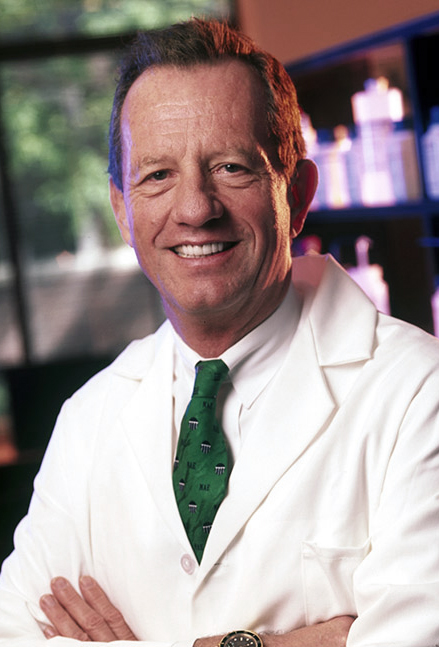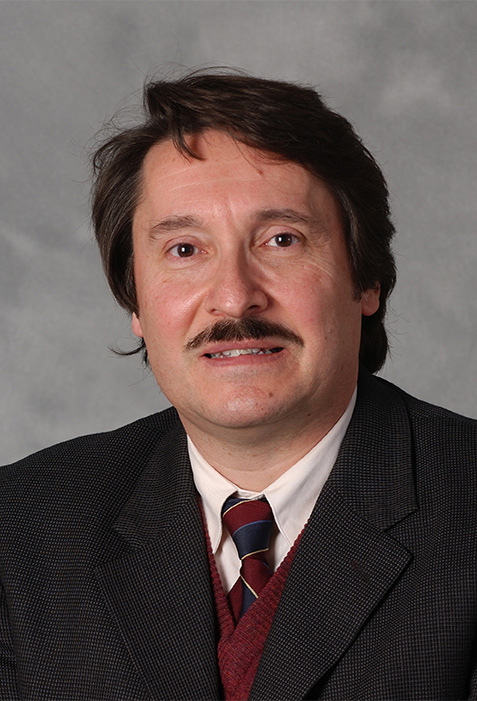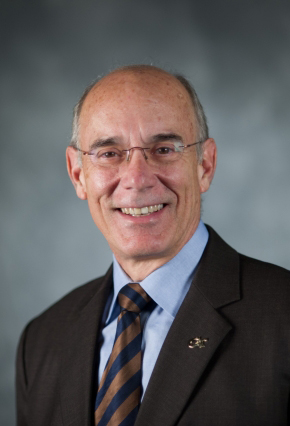From the drinking-water contamination in Flint, Mich., to the seemingly endless drought in California, good old H2O pools at the heart of many of today’s most pressing and headline-grabbing problems. Find out how the work and ideas of Tech researchers are helping us understand — and solve — these planet-wide challenges.
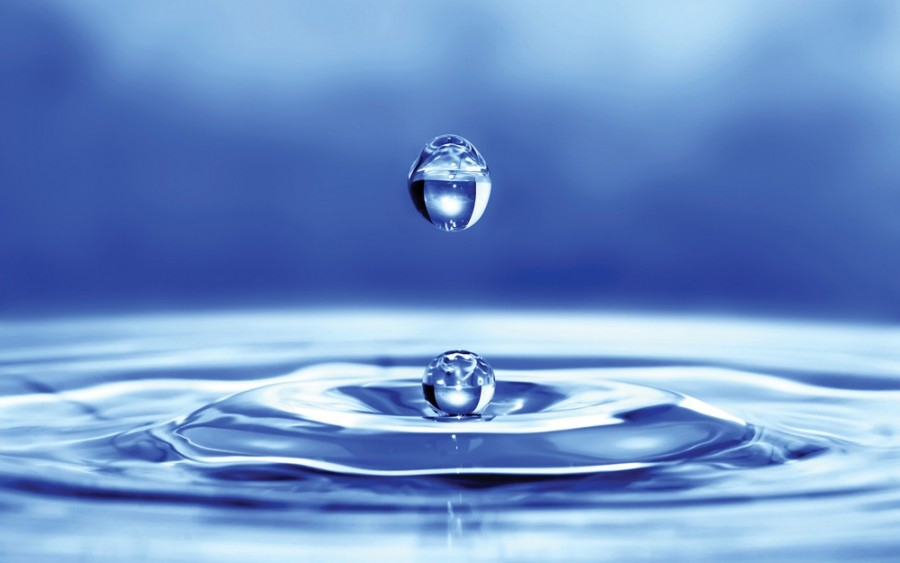
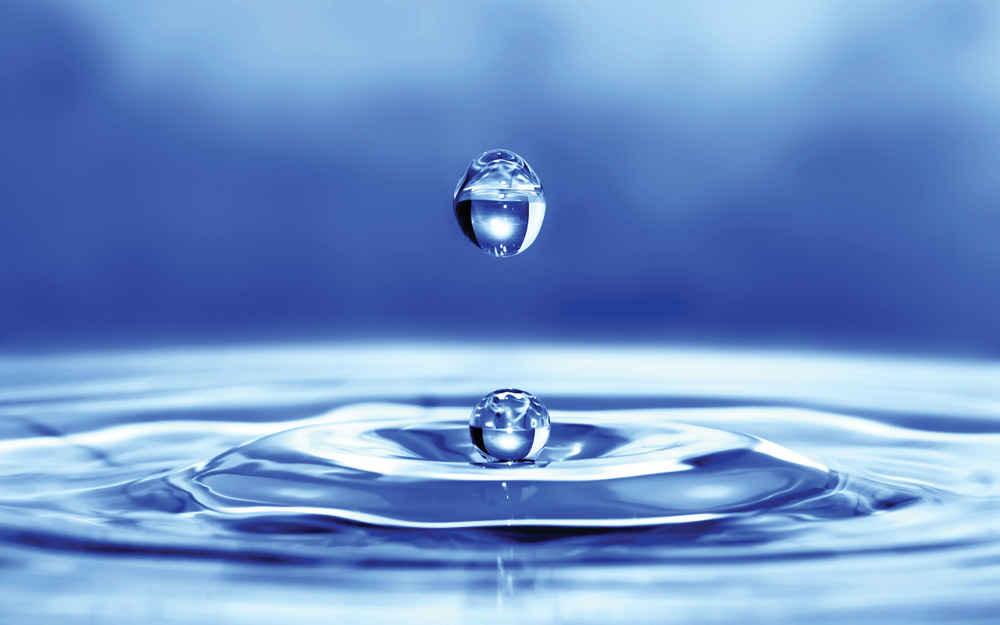 |
By Erin Peterson, Georgia Tech Alumni Magazine
Winter 2016
If you want to understand why California has been suffering from a persistent and troubling drought — if it’s just an unlucky streak or if it’s a change that might have staying power — you might begin your quest in Borneo. The equator-straddling island, just southeast of the Philippines, holds some intriguing clues.
|
READ THE FULL ISSUE |
|
While Borneo doesn’t have any mystical connection to the Golden State, what it does have may be even more powerful, says Kim Cobb, ADVANCE Professor and Georgia Power Faculty Scholar in the School of Earth and Atmospheric Sciences. The island’s remote jungle caves offer what Cobb describes as “the best, highest resolution archives of past climate.”
Specifically, the stalagmites on the island are among the very best artifacts in the world to study how precipitation patterns have changed over the course of timeframes, including the past century as well as the past few millennia. Cobb has spent nearly two decades traveling to and from Borneo to study water isotopes — chemical variations of the same element — within coral and stalagmites that are helping unlock details of precipitation variability over time.
Such research allows scientists to understand the natural variations of precipitation over long periods of time. They also allow researchers to pinpoint variations that seem to depart from the norm. In Borneo, there have been dramatic swings in precipitation over the geologic past, but Cobb’s research suggests that climate change is responsible for recent trends in tropical rainfall. Specifically, in applying oxygen isotopes to corals from the Central Pacific, Cobb has shown that the salinity of the ocean water has declined significantly, suggesting that precipitation is markedly higher than normal.
But what does this have to do with California? More than you might think.
A deeper understanding of precipitation changes and variability in the relatively recent past may offer the best opportunity to predict — and plan for — what lies ahead in a world with a rapidly changing climate. “Apart from coastal sea rise, rainfall changes are one of the most important things we need to understand about the effects of climate change,” Cobb says. “Fresh water is essential for agriculture, and we’re starting to see the vulnerability of places like California. But it’s also more than that: Many regions of the world have set up agricultural practices in line with centuries of specific rainfall patterns. And that may all be changing.”
Her research has borne out the idea — once marginalized — that in-depth study of isotopes could offer a robust understanding of past climate as a way to predict its future. Her work could help others pursue isotope-based climate science in areas most vulnerable to the effects of climate change.
We may have long taken it for granted, but there is no question that water is humanity’s most precious resource. It’s what helps us power our cities and nurture our crops. Clean water is one of the most powerful tools to keep communities healthy. And understanding and maintaining our planet’s delicate water balance is essential if we want to continue to support our world’s growing population.
At Georgia Tech, faculty, researchers and students across multiple disciplines are using their expertise to think about the water challenges our world faces in unique ways. Here, we dive into four of our planet’s biggest water problems by examining some of the big ideas that drive our researchers’ work, the ways they’re working to develop solutions, and what they foresee about our water future.
THE PROBLEM OF CLEAN WATER
When the water crisis in Flint started dominating the news in 2014 — lead levels in the drinking water were sky high, caused by changes in water sourcing and aging infrastructure — it seemed almost unthinkable. As a whole, Americans had confidently assumed that the water that pours from their faucets was clean, safe and drinkable.
Flint proved otherwise. Up to 12,000 children have suffered lead exposure high enough to cause them severe health problems. Some experts have linked Flint’s water problems to an outbreak of Legionnaire’s disease, a deadly form of pneumonia caused by waterborne bacteria, which has affected more than 80 of the city’s residents.
For Tech civil and environmental engineering professor Joe Brown, the details were particularly alarming. “Our public health is based on clean water and sanitation,” he says. “This is a battle we fought and largely won in the 20th century, but it’s become clear that we haven’t been properly investing in infrastructure.”
Brown knows perhaps better than anyone the dangers of crumbling infrastructure. “I’m very interested in how the type and function of infrastructure influences the transmission of infectious diseases through water,” he says. “My work lies at the intersection of environmental engineering and public health.”
For the most part, Brown does his work overseas, focusing on urbanizing areas of Cambodia and India. In these cities, water is often only available for a few hours of the day, typically in the morning and evening.
Such systems are uniquely vulnerable to contamination. The intermittent water flow can leave water pipes vulnerable to leaks that bring dangerous bacteria. Improperly treated, these bacteria can cause serious conditions including cholera and giardia.
Because almost all Americans live in areas with continuous water supplies, the positive pressure from the pipes keeps these bacterial baddies from seeping into the water supply. But the troubles in Flint highlight what is almost certainly going to become a bigger problem over time. “We have a multi-trillion dollar funding gap in terms of water infrastructure, and because those problems are literally underground, we often aren’t even recognizing that there’s a problem at all,” he says.
While politicians often insist it’s time to upgrade our nation’s infrastructure by pointing out our crumbling roads, Brown suggests that they may actually be in far better shape than our water infrastructure. “When you see a pothole, there’s maybe one out of a thousand people driving down the road who will call about it to make sure it gets fixed,” he says.
“There’s monitoring and feedback. And while there are certainly ways for us to test water samples in the lab, a similar kind of feedback loop just doesn’t exist in the same way for water supplies.”
Despite what appears to be a steady drumbeat of bad news when it comes to both acute and long-term water infrastructure issues, there is no question that Flint has spurred a new sense of urgency for solutions. That includes one that Brown and his team are working on now: sensors that could catch problems like Flint’s long before they spiral out of control. “Right now, low-cost sensor networks that could provide health-relevant water data at a massive scale could make a huge impact,” he says. “We need to make investments in the development of these networks that could monitor, in real time, microbial and chemical water quality.”
THE PROBLEM OF ENOUGH WATER
As the world’s population continues to skyrocket — by 2050, the global population is expected to top 9 billion people — the demand for water for drinking, power production and agriculture will continue to surge. Without big changes, our water needs will outstrip the supply, says John Crittenden, a Georgia Tech civil and environmental engineering professor and director of the Brook Byers Institute for Sustainable Systems.
It can seem like an unfathomable problem. After all, we’ve been taught since elementary school that two-thirds of the Earth’s surface is covered in water. Water is, essentially, a renewable resource. Could we really run out?
For Crittenden, the real issue is our cavalier overuse of the resource. “We really haven’t had any adult supervision when it comes to water,” he says.
Crittenden, who has been studying water sustainability for decades and was recently awarded the Clarke Prize for his pioneering work from the National Water Research Institute, argues that we must build water-based systems and infrastructure that work in concert with one another, instead of independently.
For example, he says, the water that flows from your tap is probably part of a “once-through” linear system. “Locally in Atlanta, we take water out of the Chattahoochee, we treat it and send it into the city, then we send it back into the river after we treat it again,” he explains.
He sees opportunities to use much of that water more than once. For example, we could easily use grey water — water from showering, hand washing and laundry — for watering plants and fruit trees. By some estimates, simply using this water twice could slice household water usage by 28 percent.
Meanwhile, energy companies that churn through millions of gallons of water to produce power could commit to helping people lower their energy use. It’s a tough problem to crack, Crittenden admits, since the incentives aren’t properly aligned. “These companies are always going to make more money if they make more electricity,” he says. “What might be useful are programs like those in California, which decouple a utility’s profit from the electricity they produce.”
A third area that Crittenden believes is ripe for improvement is the water-intensive agriculture sector — linked to about two-thirds of all water use worldwide. One solution, particularly for urban areas, is an idea known as controlled environment agriculture. Technologically advanced greenhouses grow plants without soil, pack far more produce in less space, and can produce crops all year round. Based on some projections, such approaches could slash water usage for some crops by 97 percent.
While some of these solutions require sophisticated technology or upgraded infrastructure, they are — at their heart — also something simpler and more elegant than that. They are the embodiment of the “reduce, reuse, recycle” mantra at the very grandest scales.
THE PROBLEM OF WATER MANAGEMENT
For decades, Aris Georgakakos has been working to answer one essential question: How do we divide up water in ways that help its users get what they want while also being environmentally sustainable?
Georgakakos, a civil and environmental engineering professor and director of the Georgia Water Resources Institute, looks at the problem through the lens of river basins. River basins, which are a bit like bathtubs, collect the water that falls within them and send it, through creeks and tributaries, to a main river that makes its way to the sea. No matter where you live, a river basin is part of your “ecological address.”
Managing the water uses within a river basin is a particularly complex riddle. “This is water that is used for many purposes,” Georgakakos explains. “Domestic and industrial water supply, irrigation, power production, navigation, recreation, the environment,” he says.
It’s not always clear how to best manage water so that everyone gets what they need — because everyone has their own ideas about what’s most important. These disputes can become heated. For example, Atlanta and southwest Georgia derive their water supply that powers their economy from the Appalachacola, Chattahoochee and Flint (ACF) river basin, which also extends over Alabama and Florida.
Georgakakos has worked with stakeholders in each and all three states for years to develop a plan to share the water equitably and sustainably, but compromises have been hard to reach.
“Stakeholders in Florida believe that too much water is taken out upstream in Georgia for irrigation and general water supplies,” he says. “They believe that they’re not getting enough water for their own economic sectors, like fishing and tourism. They’re also worried about the health of important ecological areas, like the Apalachicola Bay.”
Many in Georgia disagree. Georgia argues that it has been a responsible steward of water resources and has made large investments to increase the quantity and quality of flows returning to the river from urban and industrial areas, with some counties, like Gwinnett, being at the forefront of wastewater treatment, recycling and reuse technologies.
Despite multi-year negotiations, there has been no easy resolution, and the dispute has recently escalated to the very highest levels. “The case is currently litigated before the Supreme Court,” Georgakakos says with some resignation. “Can the Supreme Court judges gain the holistic understanding that’s required to address fairly and decisively a complex problem like this in such a short order? It remains to be seen.”
Sending a water-use issue to the highest court in the land may seem extreme. But Georgakakos says that water disputes are flaring up worldwide and can have even more dire consequences.
For instance, Ethiopia is currently in the process of building a very large dam on the Blue Nile River near the border with Sudan. “The Grand Ethiopian Renaissance Dam, as it’s called, is so big that it will change the way that the Nile flows through the downstream countries, Sudan and Egypt,” he says.
This dam is expected to generate large amounts of energy, helping the Ethiopian economy grow, and provide flood protection for flood prone areas in Sudan, including the capital Khartoum. It will also enable increased agricultural water withdrawals in Sudan. These river flow alterations have the potential to impact the water supplies that Egypt has come to depend on for its economy and livelihood.
That’s no small matter, Georgakakos says. “A large percentage of the Egyptian economy depends on the flow of the Nile,” explains Georgakakos, noting that agricultural production could be particularly affected. “If you read the local newspapers, you can see that all sides are willing to go to war over this — a real war, not a war of lawyers and words.”
Georgakakos has played a key role in helping to develop peaceful, equitable, and sustainable water sharing solutions for the East Africa region, but the case highlights a larger truth about the importance of well-managed water resources.
If there is one water issue that keeps Georgakakos up at night, it is the specter of climate change. Typically, water management plans are put in place to last for decades, but climate change could cause unprecedented droughts and decreases in river flows, soil moisture, and groundwater supplies.
“If the climate changes its historical patterns in the next few decades and water supplies decline by 10–20 percent, how can we cope with this recession, particularly in light of steadily rising populations and water demands?” he asks “We need to find better ways to inform our policy makers of the emerging new risks, fashion more effective management and adaptation strategies, and demand that our water institutions adopt them to balance economic growth, environmental sustainability, and quality of life.”
WATER’S DOMINO EFFECT
Humans have proved to be remarkably adept at transforming the landscape in ways that allow us to live more comfortably, but less skilled at seeing the long-term consequences of our actions.
For Rafael Bras, Georgia Tech provost and professor of civil and environmental engineering, as well as Earth and atmospheric sciences, deforestation in the Amazon is a key illustration of this idea. Over the past four decades, deforestation along the Amazon River has grown alongside huge increases in cattle ranching. By some estimates, nearly 20 percent of the rainforest has been cut down. The growth in ranching has lifted many out of poverty, but the environmental consequences have been severe.
For example, the bare soil and grass absorb far less moisture than trees they replaced. While some of that unabsorbed water runs off to the river, some evaporates into the air, increasing cloudiness and warming the area like a blanket.
Right now, satellite data of rainfall and soil moisture levels collected by NASA-funded spacecraft is helping scientists like Bras understand the nuances of these changes, but he admits that solutions to the problems potentially caused by the changes are far in the future.
“Eventually, this information and these tools could help us create better patterns of development that would be less harmful to the whole ecosystem,” Bras says. “With the help of policy and decision makers, we could provide ideas about how to do things better.”
Annalisa Bracco, an Earth and atmospheric sciences professor, is also studying the unintended consequences of commercial development. New dams along the Mekong River that run through China, Thailand and Vietnam are being developed to produce the additional power needed to support the nations’ population growth. While the dams are a better option than coal for producing clean energy, there are still major concerns.
“These dams are completely changing how the river works, and it could have a huge effect on the productivity of their coastal oceans, which provide about 20 percent of the food supply for Vietnam,” Bracco says.
It can seem like a faraway problem, but America has had its own blind spots. When farmers in the Midwest first began pumping up their use of fertilizers in their crops, the nitrogen-filled soil made its way to the Mississippi River, leading to massive algae blooms that continue to plague certain areas. In late 2015, a record-breaking level of toxic algae led to beach and oyster reef closures in Mississippi.
Emanuele Di Lorenzo, professor of ocean and climate dynamics, also sees the effects of these unexpected interdependencies. He has long studied the climate of the Pacific Ocean, and climate-related events are beginning to take their toll. A one-two punch of a prolonged marine heatwave starting in 2013, followed by one of the largest El Niños on record in 2015 and early 2016, had startling effects, including massive die-offs of birds, mammals and other marine life.
Humans, too, feel the effects of these events in real ways. “The heat wave was associated with severe droughts along the west coast of the United States, and the emergence of toxic plants near the coasts that led several fisheries and beaches to close,” Di Lorenzo says.
The domino effects of changes worldwide, both natural and man-made, can seem overwhelming. But the work that scientists are doing to understand the changes will be what helps us minimize or halt the consequences.
FROM PROBLEMS TO SOLUTIONS
The larger lessons of water teach us that there are rarely simple, individual challenges, but rather complex and interconnected ones. In the past, big breakthroughs that solve important problems could be dreamed up by lone geniuses in a lab — think Alexander Fleming’s discovery of penicillin — yet today the answers are more complicated and nuanced. They require high-octane thinking from researchers with diverse specialties and expertise, who can pull back and look at the problems we face at a much higher level.
Di Lorenzo sees this truth in his own work, but it could be said of nearly every water-linked problem that we face. “Today’s threats to water require a synergistic approach,” he says. “We must take into account the physical, biological, chemical and human dimensions of these problems.”
In a way, this may be why a place like Georgia Tech is uniquely poised to bring real solutions to the problems we face with clean water, sustainability and climate change. These are not, fundamentally, problems that can be solved only with better technology. Instead, they will be solved by better collaboration that seeks to address issues holistically, Georgakakos says. “Solving water problems requires us to build strong connections — between atmospheric scientists and hydrologists, ecologists and engineers, economists and sociologists, policy makers and water stakeholders — to underwrite a sustainable and prosperous future.”

